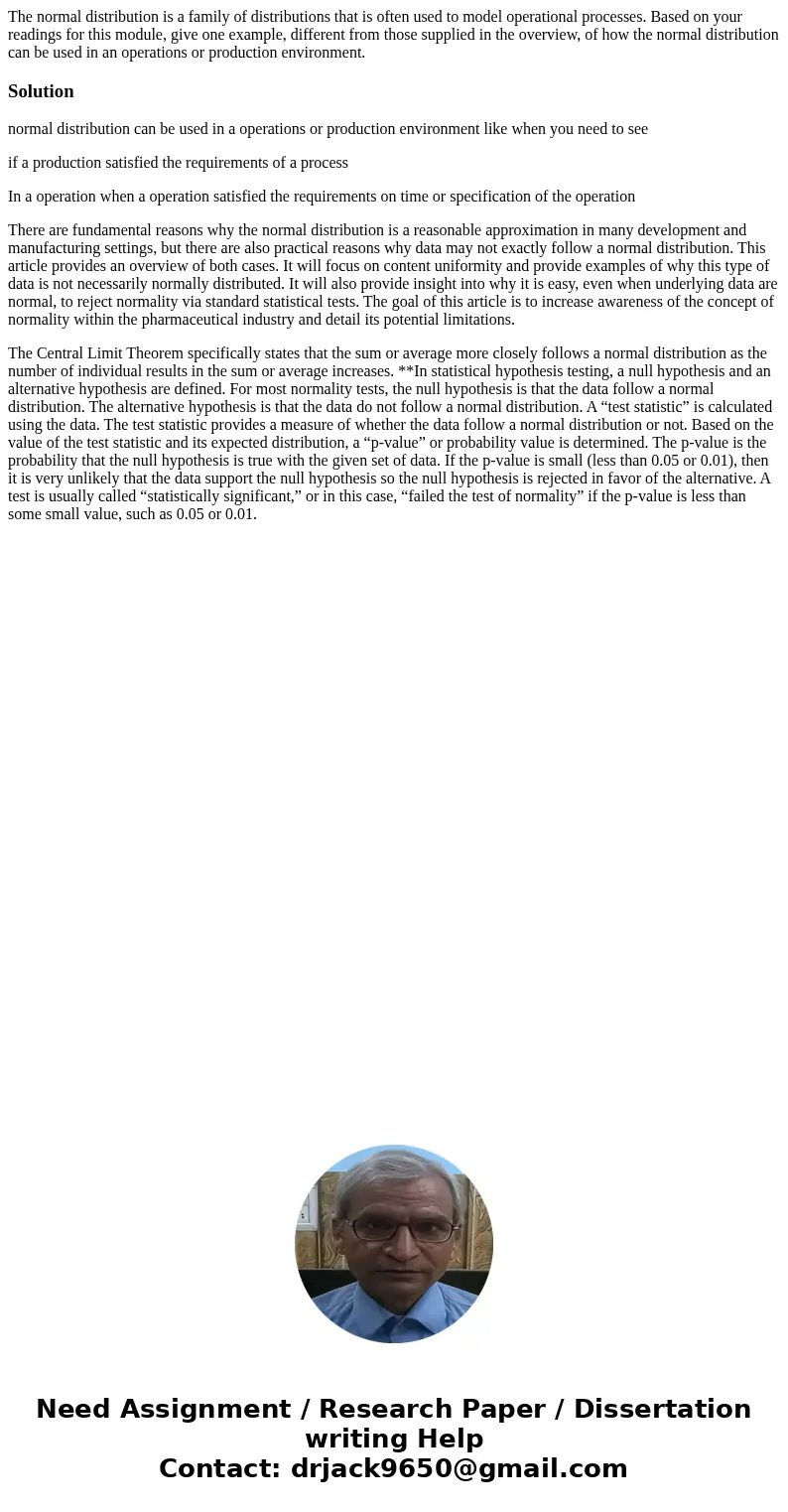The normal distribution is a family of distributions that is
The normal distribution is a family of distributions that is often used to model operational processes. Based on your readings for this module, give one example, different from those supplied in the overview, of how the normal distribution can be used in an operations or production environment.
Solution
normal distribution can be used in a operations or production environment like when you need to see
if a production satisfied the requirements of a process
In a operation when a operation satisfied the requirements on time or specification of the operation
There are fundamental reasons why the normal distribution is a reasonable approximation in many development and manufacturing settings, but there are also practical reasons why data may not exactly follow a normal distribution. This article provides an overview of both cases. It will focus on content uniformity and provide examples of why this type of data is not necessarily normally distributed. It will also provide insight into why it is easy, even when underlying data are normal, to reject normality via standard statistical tests. The goal of this article is to increase awareness of the concept of normality within the pharmaceutical industry and detail its potential limitations.
The Central Limit Theorem specifically states that the sum or average more closely follows a normal distribution as the number of individual results in the sum or average increases. **In statistical hypothesis testing, a null hypothesis and an alternative hypothesis are defined. For most normality tests, the null hypothesis is that the data follow a normal distribution. The alternative hypothesis is that the data do not follow a normal distribution. A “test statistic” is calculated using the data. The test statistic provides a measure of whether the data follow a normal distribution or not. Based on the value of the test statistic and its expected distribution, a “p-value” or probability value is determined. The p-value is the probability that the null hypothesis is true with the given set of data. If the p-value is small (less than 0.05 or 0.01), then it is very unlikely that the data support the null hypothesis so the null hypothesis is rejected in favor of the alternative. A test is usually called “statistically significant,” or in this case, “failed the test of normality” if the p-value is less than some small value, such as 0.05 or 0.01.

 Homework Sourse
Homework Sourse